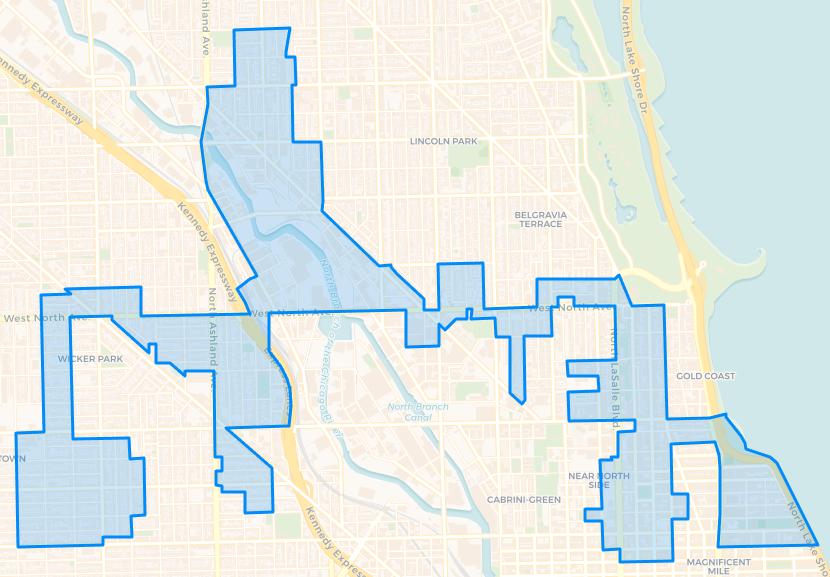Mayor Lori Lightfoot wants to take the power of drawing ward maps away from the City Council and give it to an independent citizens’ commission. She's is tired of aldermen drawing weird wards shaped like lobsters, machine guns, and digestive systems to get themselves re-elected.
“I live in the 35th Ward, and the ward has no relationship to neighborhood boundaries,” Lightfoot told WTTW. “We can’t afford to keep carving up communities [in a way] that isn’t fair to them or doesn’t give them fair representation.”
Before the advent of computer-assisted mapping, Chicago’s wards were much more regularly shaped. Here's a comparison of the ward map in place in the 1960s with the ward map we’re using today:
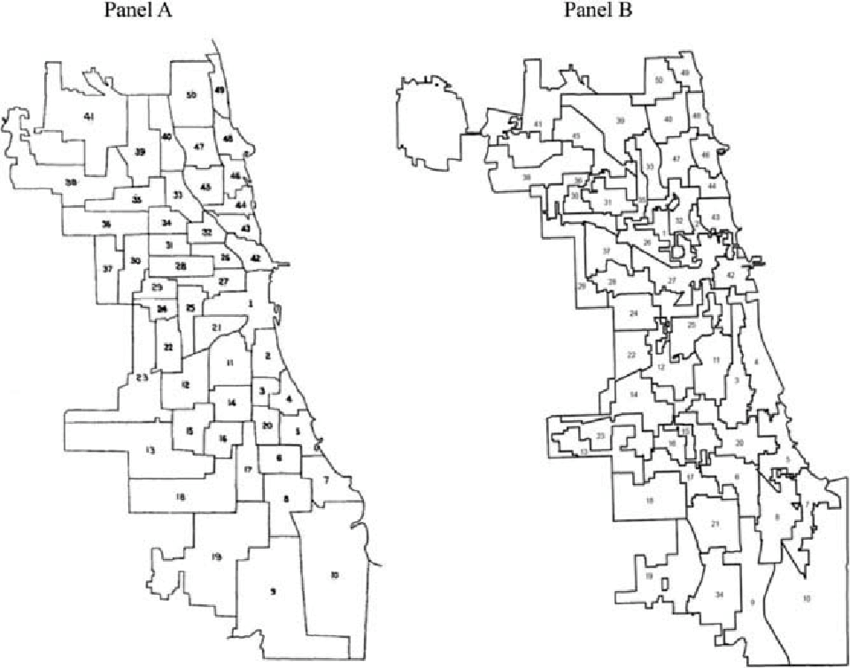
Via
In addition to helping incumbents stay in office, gerrymandering can also protect representation for immigrants and communities of color. Just look at Illinois’s 4th congressional district, which connects the Northwest and Southwest sides to ensure the election of a Latinx representative.
That’s why Ald. Jason Ervin, chairman of the City Council’s Black Caucus, defends gerrymandering. Ervin wants to keep the number of black aldermen at 18 in the next remap. That’s going to take some very creative cartography, since black Chicagoans are the city’s fastest-shrinking demographic.
Lightfoot and Ervin obviously have different definitions of what constitutes “fair representation.” To Lightfoot, it’s ensuring that voters with common geographic interests are gathered into the same ward. To Ervin, it’s ensuring that underrepresented groups have a seat on the City Council.
Other aldermen have drawn their wards either to eliminate competition, or to pack their constituencies full of friendly voters. Here are some of the wards that most violate the mayor’s idea of fairness.
2nd Ward
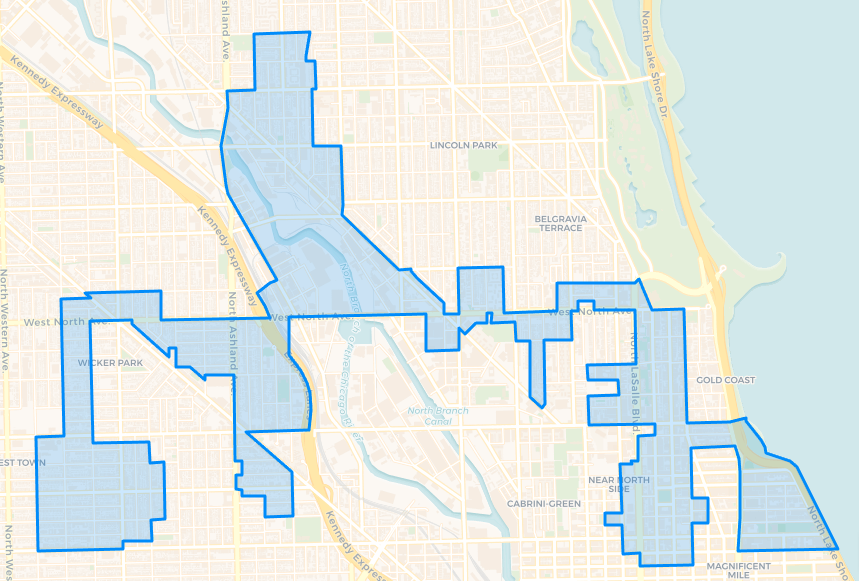
Historically, the 2nd Ward was a stronghold of black political power. Chicago's first black alderman, Oscar DePriest, won the seat in 1915, and it was represented by black politicians for nearly a century.
Then gentrification spread from the South Loop, and a white candidate, Bob Fioretti, was elected in 2007. Fioretti turned out to be a huge pain for Mayor Richard M. Daley, regularly voting against his budgets. So during the last ward remap in 2012, his seat was eliminated. The 3rd and 4th wards were moved north, preserving black representation in Bronzeville, and the 2nd Ward was relocated to the Near North Side.
In the words of Greg Hinz, the 2nd is “not so much a ward as a collection of stray blocks that other aldermen didn't want, connected with strings.” Beginning along the lakefront in Streeterville, the ward jukes and jogs west to Ukrainian Village, looking like a video game character with missing pixels. Significantly, it contains the Lincoln Yards development.
Ald. Brian Hopkins was recently elected to a second term without opposition, probably because he’s the only person who’s actually aware he lives in the 2nd Ward.
14th Ward
.png)
Ever wonder how Ed Burke won a 13th term despite being under federal indictment for bribery? That would be thanks to the 14th Ward, where he managed to attach a long, thin slice of white-majority Garfield Ridge to his territory, which otherwise comprises Latinx-majority Archer Heights and Brighton Park.
According to the Tribune, that little tail wagged the dog for Burke on Election Day:
“[I]n four precincts in the western finger of the ward — a 38-block-long gerrymandered extrusion that in places is just one block wide — Burke’s operation shuffled that deck and got his voters to the polls. The contiguous 1st, 4th, 9th and 24th precincts at the far edge of that protuberance had 52 percent voter turnout, compared with a dismal 30 percent turnout in the other precincts. Those four key precincts, which overwhelmingly supported white mayoral hopefuls Jerry Joyce and Bill Daley, voted 70 percent for Burke. That margin boosted Burke to 3,759 total votes, close to 54 percent, enough to claim re-election and avoid a runoff.”
Lightfoot is trying to chase Burke out of the City Council, so you can bet she’ll cut off that appendage in the next remap.
16th Ward
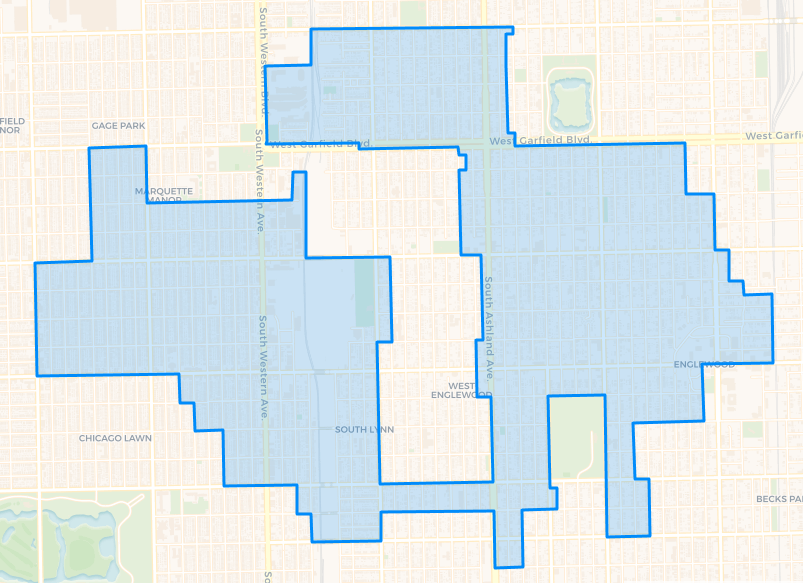
Englewood, one of the city's most underserved neighborhoods, doesn’t have an alderman to call its own. That's because it's split up between the 3rd, 6th, 15th, 16th, 17th, and 20th wards.
South Side Weekly offers this explanation for Englewood’s orphan status on the ward map:
“[T]he area has suffered from both its proximity to more powerful neighborhoods that make up the core of their own wards — like Bridgeport in the 11th Ward, or Chatham in the 6th — and its lack of formal power structures recognized by the map-makers in City Hall. And with city population on the decline over the last several decades — a decline driven largely by Black residents leaving the city due to disinvestment on the South and West Sides — more powerful South Side wards have had to extend their boundaries to pick up more constituents, carving up Englewood in the process.”
Satisfying the needs of better-connected neighbors has resulted in a 16th ward that looks like a Star Wars All Terrain Walker with a wasps’ nest tethered to its ankle. During the last ward remap, 15th Ward Ald. Toni Foulkes was drawn out of a seat, so she ran — and won — in the new 16th instead. In April, Foulkes lost to Stephanie Coleman, daughter of former 16th Ward Ald. Shirley Coleman.
35th Ward
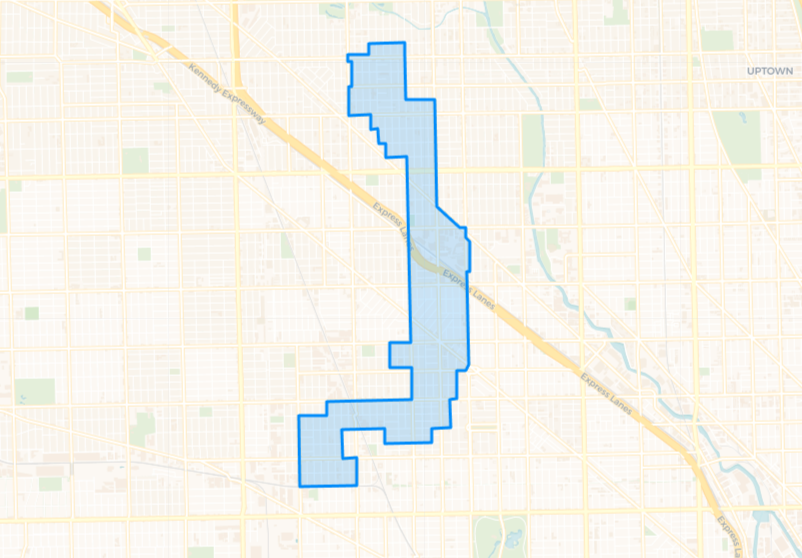
Lightfoot has a point about her own long, skinny ward. It looks like an embryo, or a Giacometti sculpture sitting in a chair. Stretching from Logan Square and Hermosa to Albany Park, it gathered together enough hipsters and progressive Latinx voters to elect a the city's first socialist alderman, Carlos Ramirez-Rosa, in 2015. That’s not the worst result of gerrymandering.
36th Ward
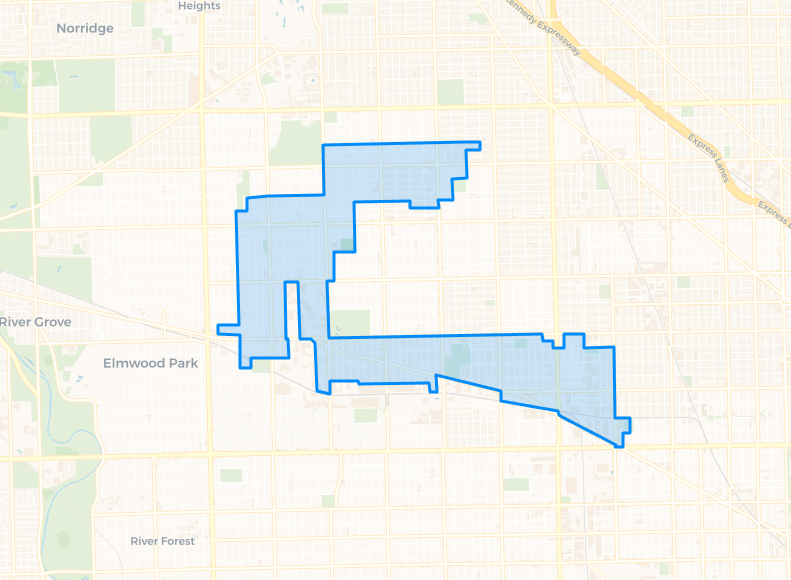
On the city's ward map, the 36th Ward (pictured) appears to be eating the 31st Ward, which in turn appears to be eating the 30th Ward, a Russian nesting doll of wards drawn in order to maximize Latinx representation on the Northwest Side:
.png)
The 36th Ward takes in parts of Montclare, Portage Park, Belmont Cragin and Hermosa, neighborhoods that may be surprised to learn they share an alderman. It is also represented by Ald. Gilbert Villegas, Mayor Lightfoot’s floor leader, so it’s probably not going to change much.
40th Ward
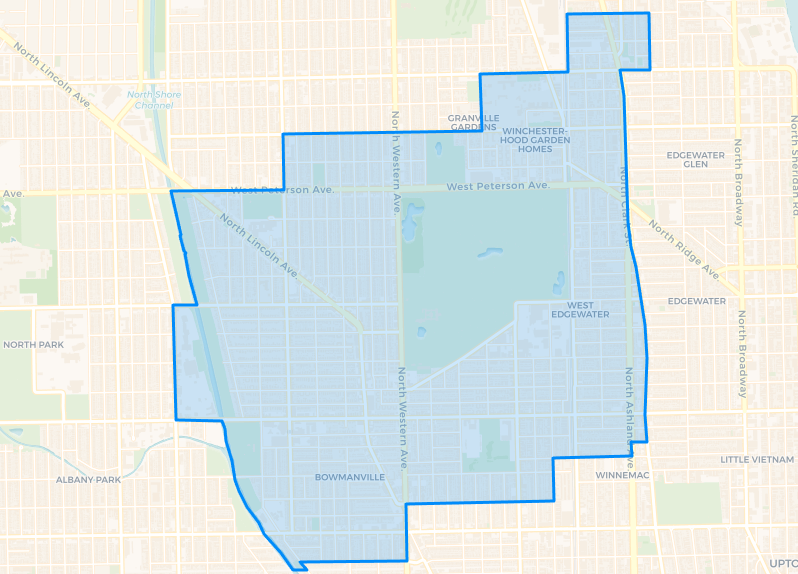
In February, there was a 49th Ward candidates debate at Sullivan High School in Rogers Park, a block from where I live. Unfortunately, it didn’t concern me, because my little corner of that neighborhood is in the 40th Ward, which it shares with Andersonville, Bowmanville, Ravenswood and Budlong Woods.
Essentially, the ward is drawn around a geographic feature with no residents: Rosehill Cemetery. Ald. Patrick O’Connor, who represented the ward for 36 years, liked it that way, because his far-flung constituents had no common interests around which to organize. (O’Connor was nonetheless defeated by democratic socialist Andre Vasquez in the April runoff.) Here’s hoping the next remap puts my block in the 49th Ward, with the rest of Rogers Park.




